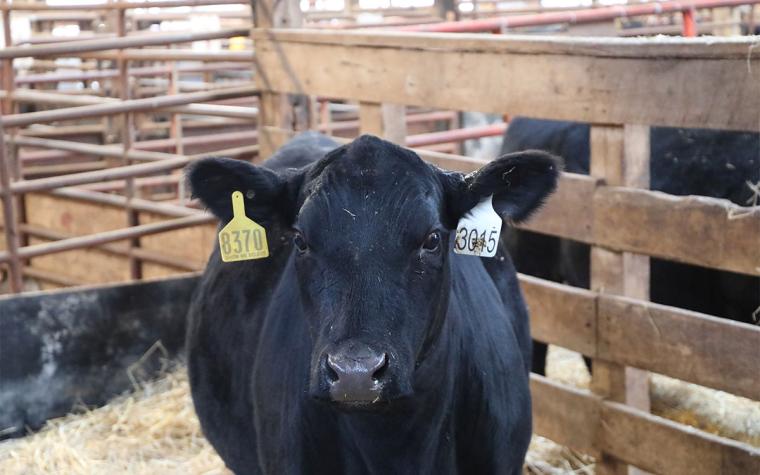STOCKTON, Mo. – “There are many benefits to early pregnancy checking replacement heifer,” says Patrick Davis, University of Missouri Extension livestock field specialist. The Show-Me-Select (SMS) Replacement Heifer Program, which is considered the “black and gold standard” for replacement heifer development, requires pregnancy checking heifers within 90 days of the beginning of the breeding season.
“Early pregnancy checking allows more accurate determination of days pregnant and calving date of your heifers,” says Davis. Once the pregnancy is more than 90 days, the fetus slips over the pelvic rim and days pregnant determination becomes less accurate. By knowing the most accurate calving date, you can be better prepared if issues happen during calving. Also, if the veterinarian is using ultrasound, fetal sex determination is possible between 60 and 90 days pregnant.
Recent analysis of SMS sale data from 2018 to 2024 by Martins and Rocha Jr. showed an average sale premium of $143 per heifer for fetal sex determination. Therefore, if you are selling heifers, incorporating fetal sex determination into your early pregnancy checking protocol may improve sale price of your heifers.
“It is important to cull heifers that failed to conceive in their first breeding season to promote optimum cattle operation reproductive efficiency,” says Davis. Montana research, shared in an Oklahoma State University communication, showed that heifers that did not conceive during their first breeding season averaged a 55% annual calf crop throughout their lifetime. Also, Moorey and Biase in a 2020 review article commented, sourcing three research papers, that heifer reproductive success in the first calving season is highly linked with lifetime reproductive efficiency. Therefore, cull these open heifers to promote optimum cattle operation reproductive efficiency.
“Cull these open heifers as soon as possible to get optimum salvage value,” says Davis. Heifers that enter the breeding season at approximately 14 months should be approximately 18 months at pregnancy check time and can still be marketed to meet the choice grade. If culling is delayed and heifers are marketed later, their value may be reduced due to inability to reach the choice grade. Therefore, check for pregnancy early and market open heifers as soon as possible for optimum salvage value.
“Marketing these open heifers as soon as possible also helps reduce the negative impact on feed resources,” says Davis. Feeding unproductive animals is wasteful and hurts your operation’s bottom line. Davis suggests culling these open heifers and replacing them with productive females to improve production efficiency and operation bottom-line.
Furthermore, if you sell bred replacement heifers, incorporate fetal sexing into your early pregnancy checking protocol to potentially receive premiums for your heifers. For more information on early pregnancy checking replacement heifers and the benefits, contact your local MU Extension livestock field specialist.
